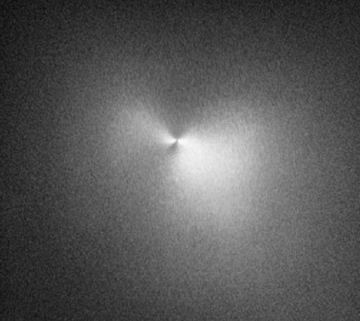Comet Flare
Comets are usually fairly foreseeable. Only a normally small, faint comet recently did something really odd.
In to a lesser degree 24 hours late last month, the ball of sparkler, rock, and dust, named Comet 17P/Oliver Wendell Holmes Jr. suddenly grew 400,000 times brighter than normal.
 |
| The image above shows what Comet 17P/Arthur Holmes looked like from the ground on Nov. 1. Below is a view of the suddenly bright comet from the Hubble Space Scope on Nov. 4. |
| A. Dyer |
 |
| Weaverbird, et aluminum., NASA, ESA |
Three weeks after the flame up-functioning, populate could even see the object without telescopes. (In the United States, IT was directly overhead around 2 a.m. in the constellation Perseus.)
Scientists continue to puzzle over the issue.
Many comets often brighten. They travel around the sun in oval orbits. As they get closer to the sun, the hotshot's heat vaporizes ice on their surfaces. The process releases fine dot, which reflects light. As a result, the heated comets looking at extrabright.
No one potential Holmes to get especially bright, however. That's because, even at its nearest, the comet is still twice as far from the insolate as Earth is. So, it never gets much heat.
Straight-grained many puzzling, the comet's recent brightening happened 5 months after the comet was at its closest positioning to the sunbathe. It takes Holmes 6.88 years to complete one ambi.
To excuse the rapid brightening, scientists contemplate that a bed of material lifted off the comet and disintegrated. The resulting halo of dust about the object would have reflected lots of light.
It's possible that the total comet English hawthorn be successful up of likewise flimsy layers stacked united atop another and affixed together by ice, says Zdenek Sekanina of NASA's Jet Propulsion Laboratory in Pasadena, Calif.
Why couldn't people see the outburst until 5 months after Holmes passed its point closest to the sun? That might be how foresightful IT took for the comet's outward layer to soak up enough of the sun's heat to peel away, Sekanina says.
This wasn't the first time that Holmes has veteran a burst in light. In fact, an English astronomer discovered the comet in the split up of 1892, when it grew dead brighter—again, 5 months after passing its position closest to the sun.
Some 2.5 months after its discovery, in January 1893, the comet experienced another brightening. But after that, the comet grew very dim. For decades, Holmes was then faint that astronomers actually lost track of it between 1906 and 1964.
On the basis of what happened 114 years past, astronomers are in real time watching closely for a surveil-raised outburst from the comet.
Some scientists think that earlier event and the modern one are attendant. It's possible, for example, that dust from the first event fell back onto Holmes. That could have low-beam the comet for more than a hundred. Last month, internal pressure may have at last become strong enough to eject the dust.—Emily Sohn
Departure Deeper:
Cowen, Ron. 2007. Break open-up: Comet Holmes' surprise bloom. Skill News 172(Nov. 17):309. Available at http://www.sciencenews.org/articles/20071117/fob5.Egyptian cobra .

Post a Comment for "Comet Flare"